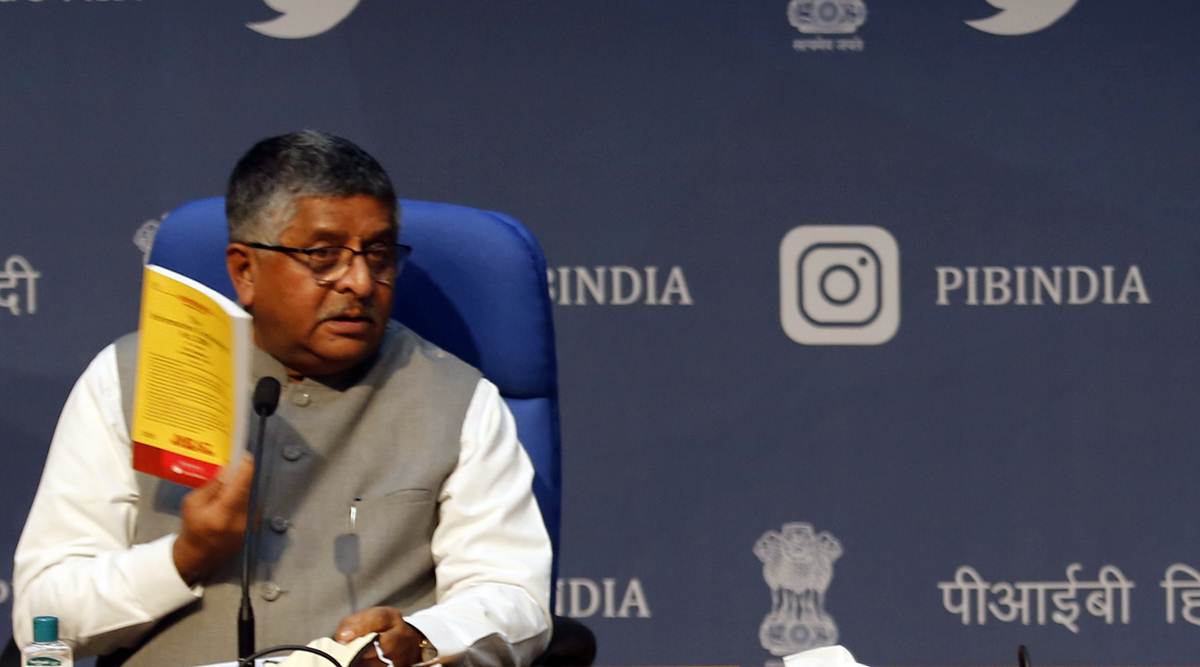The central government has reacted to the social media scandals and prob. It has issued a strict code of conduct confirming the actions that social media owners must take to crack down on false news, false propaganda, and criminal information.
It has also set guidelines for streaming companies such as YouTube, Amazon Prime, and Netflix to follow when it comes to content on their platforms.
It directed that prompt action will be taken on the disputed information, and to appoint officers to resolve the grievances.
We all know the feud between the Indian government and popular social media site Twitter over the government’s directives to delete posts and related accounts that were in support of farmers agitating against new cultivation laws.
In this context, Union IT Minister Ravi Shankar Prasad on Thursday unveiled the latest rules and regulations for the regulation of social media, OTT, and digital media under the title ‘The Intermediate Guidelines’ and ‘Digital Media Ethics Code’.
Owners of social media such as WhatsApp, Facebook, Twitter, and OTT platforms such as Netflix, Amazon Prime, Disney+ Hotstar should hire specialized agents in India to coordinate with investigative agencies.
Also, identify the person who originally created the conflicting information within 24 hours and delete that information, and remove that account.
It has also ordered to respond within 24 hours of receiving the complaint in any case of information such as sexual scenes, morph photos, and nudity that could damage the dignity of women.
The platforms are directed to appoint an officer who resides in India for redressal of grievances from government agencies, to prepare a monthly report detailing the action taken on complaints, and to respond to consumer complaints within 15 days.
He clarified that if the government orders the removal of any information that could harm the sovereignty of the country, the defense of the country, and the peace and security in the society.
A three-tier grievance redressal system with self-regulation should be set up.
The first level should be the self-regulation of the publishers. The second level should be the joint self-regulatory department for publishing companies, and the third level should be the supervisory control.
A retired Supreme Court judge, or a retired High Court judge, or an expert in relevant matters may be appointed for the second-level self-regulatory department.
That committee should have a maximum of six members. The committee should be registered with the Department of Communications.
Related News: Reliance to transfer the O2C company to an independent subsidiary
New Guidelines

Guidelines have been devised to divide social media companies into two categories based on the number of users.
Mentioned that effective social media should be treated more responsibly. The regulations also stipulate that digital platforms that provide news and news articles must clearly state their ownership details.
Ravi Shankar Prasad said the rules were designed to ensure that social media, OTTs, and digital news platforms are not misused.
He said the companies need to be more accountable.
The latest rules replace the 2011 rules. Well-known social media companies have been given three months to implement the latest rules.
“We welcome the business expansion of international social media companies in India. We also respect criticism and dissent. Also, there should be a proper platform for social media users to resolve their grievances” he explained.
It is a known fact that after Jio, the internet, and data are becoming cheaper in India, and smartphones with the latest technology and connectivity can be affordable around Rs. 6000 now.
In India, WhatsApp has over 53 crore users, Facebook 41 crore, YouTube 44.8 crore, Twitter 1.75 crore, and Instagram 21 crore.
The IT department oversees social media regulations. OTT and Digital Media regulations are overseen by the Department of Communications. Union Home Minister Amit Shah has made it clear that all social media companies should respect Indian laws.
He tweeted that the new guidelines were aimed at empowering social media users.
According to the latest regulations, all social media owners are required to appoint a Chief Compliance Officer, a Nodal Contact Officer, and a Resident Grievance Officer.
They must reside in India. They should prepare a report on complaints on a monthly basis. Users should be given the opportunity to verify their accounts voluntarily.
The user must be informed in advance of the removal of the content. Consumers should have the opportunity to challenge this decision.
OTT companies should divide their content into five categories: Universal, U / A7+ years, U / A13+ years, U / A16+ years, and A (adult only) based on the age of the users.
The respective sections should be displayed clearly visible on the screen. With that, users come to an understanding in advance about the video they are going to watch.
For U / A 13+ years. A parental lock facility should be provided without access to children in respect of the above sections.
There must be a credible process of age determination to view adult content.
Digital media outlets broadcasting news and news stories are required to comply with the rules of the Press Council of India and the Cable Television Networks Regulation Act. Myths and lies should not be spread.
Users should be given the opportunity to verify their accounts voluntarily.
The user must be informed in advance of the removal of the content. Consumers should have the opportunity to challenge this decision.
Also Read: Fear of the second wave hovering as India sees nearly 87,000 Covid-19 cases this week
Discover more from Thenewsdoor
Subscribe to get the latest posts sent to your email.






One thought on “Centre issues strict guidelines for social media and Three-tier surveillance on OTT content”